Vegetable Miso Soup

Vegetable Miso Soup is packed full of veggies and the savory, earthy flavors of miso and ginger. A bit of hot sauce gives it a little kick to liven up those taste buds.
I opted for mushrooms, bok choy, carrots, and green onion as my veggies, but you could also use cabbage, peas, or bean sprouts. This soup is easy to customize with your own favorite flavor combos. Just don’t skip the miso and ginger.
Is this an authentic miso soup? No, it isn’t. This is my adaption using the flavors we enjoy. Traditional miso soup uses dashi as the broth, commonly made from kelp and bonito flakes. It is also common to add tofu and wakame seaweed to the soup; although, there are a number of variations to the basic recipe. If you’d like more information for making a traditional miso soup, visit Nami’s site Just One Cookbook and check out her article Homemade Miso Soup.
Other than some chopping of vegetables, this soup comes together from start to finish in about 40 minutes. Everything (except the noodles) is cooked in the same dutch oven, so clean up is also minimal for Vegetable Miso Soup. While you don’t have to put noodles in miso soup, it does make the soup more filling.
I do believe that you will love the combination of an easy recipe and amazing depth of flavor as much as we did. This recipe makes four generous servings, so it’s perfect for easy lunches during the week.
FAQs:
How long does miso soup last?Store the soup base in an airtight container in the fridge for up to three days. Make sure to store the noodles in a separate airtight container. Or just cook more noodles as you reheat your soup.
Can you freeze miso soup?You can freeze the vegetable broth in an airtight container for up to 3 months. Do not freeze the noodles in the soup broth. Make fresh noodles to add to the soup after defrosting.
What to put in miso soup?This is an easy soup to customize. More ingredients you might consider include: nori, spinach, tofu, bean sprouts, water chestnuts, edamame, shrimp, or shredded chicken.
Ingredients for Bok Choy Miso Soup:
- Avocado oil: It has a very mild flavor and is rich in healthy fats and antioxidants.
- Vegetables: Customize to your liking—I used bok choy, carrots, and mushrooms.
- Aromatics: Green onion, garlic, and ginger.
- Miso paste: It’s made with fermented soy beans and adds deep umami and savory notes to the soup. Miso is a great source of healthy probiotics.
- Gochujang paste: Brings a bit of spice to this soup. It’s a Korean condiment made from fermented soy beans and spicy red peppers. If you have a low heat tolerance, start with less. You can always add more to taste.
- Vegetable broth: Use any broth you like.
- Toasted sesame oil: It has a delicious, nutty flavor.
- Seasonings: Sea salt and black pepper.
Ingredient Tip:
- Taste the soup before adding additional salt. Different broths contain different amounts of salt, and you don’t want the soup to end up too salty.
How to Prepare Miso Soup with Noodles:
- Begin by prepping the veggies. Depending on the size of your carrots, you may want to cut them in half lengthwise, then chop them into half moons. Cut the end off the bok choy and separate the stems from the leaves. Shred the leaves into bite-sized pieces, then cut each stalk in half lengthwise and slice thinly across. Slice the mushroom caps and dice the stems, then slice the green onions (both green and white parts).
- Heat the avocado oil in a dutch oven over medium-high heat. Add the carrots and bok choy stems and cook about 5 minutes, stirring frequently. Add the mushrooms, and cook about 3 minutes to soften. Toss in green onions, garlic, ginger, and gochujang, and cook about 2 minutes stirring constantly. Turn the heat down to medium, and add vegetable broth, miso paste, pepper, and salt.
- Cover and simmer for about 5 minutes to allow the miso paste to dissolve. Stir in the bok choy leaves, and simmer about 10-15 more minutes until the bok choy leaves are wilted. Remove from heat, and stir in the toasted sesame oil. Taste for seasoning, and adjust if necessary.
Recipe Tip:
- Do not allow the miso to boil. This kills the probiotics that are so beneficial to gut health.
- While the soup is simmering prepare your noodles according to the package directions. I used udon noodles, but you can use any type of noodles you like. The important part of this step is to cook the noodles separate from the soup itself. If you cook the noodles in the soup broth, they will soak up too much of the liquid. And, if you have leftover soup, the noodles will be completely soggy the next day.
- To serve: Simply place as many of the noodles as you would like in a bowl, then add the amount of soup you would like. Garnish with additional green onion, if desired.
What to Serve with Miso Soup:
- rice
- marinated or fried tofu
- steamed vegetables
- kimchi
- grilled, baked, or steamed fish
- edamame
More Asian-inspired Recipes:
- Rice Noodle Salad with Miso Ginger Dressing
- Inside Out Egg Rolls
- Coconut Rice with Coriander
- Toasted Sesame Green Beans
- Grilled Miso Cedar Plank Salmon
- Toasted Sesame Noodle Stir Fry
Inspired Fresh Life is a participant in the Amazon Services LLC Associates Program, an affiliate advertising program designed to provide a means for sites to earn advertising fees by linking to Amazon.com. Thank you for supporting Inspired Fresh Life.
Ingredient Substitutions and Dietary Needs:
- Bok choy: Cabbage, spinach, or other greens you like.
- Vegetable broth: Dashi is the traditional broth for miso soup, but any broth you like can be used.
- Gochujang: Try sriracha, red chili flakes, or your favorite hot sauce.
- Gluten-free: To make this miso soup gluten-free, simply ensure your noodles, miso paste, and gochujang are all gluten-free. I like Lotus Foods Organic Millet and Brown Rice Ramen Noodles.
- Vegan/Vegetarian: As written, this recipe is vegetarian and vegan.
Recipe Notes:
- This recipe was originally published on October 1, 2018 but has been updated with new photos and recipe tips to improve the reader experience.
- Miso paste can be a little tricky to find. Some markets carry it in the produce department near the tofu. You can also find it at international markets. Amazon carries a gluten-free, non-GMO miso paste.
- Gochujang can typically be found in well stocked markets. If you're a Trader Joe's fan, they also carry it now. If you can't find it, check out gochujang from Amazon.
- I love my Lodge Cast Iron Dutch Oven for simmering soups and sauces. It provides an excellent distribution of heat.
Did you make this recipe? Please leave a ⭐️⭐️⭐️⭐️⭐️ rating in the recipe card and/or a review in the comments section at the bottom of the page. Are you following along on Pinterest, Instagram, or Facebook?
Vegetable Miso Soup
Recipe details
Ingredients
- 1 tablespoon avocado oil
- 2 heads bok choy, stems and leaves (272 grams)
- 1 cup carrots, chopped (143) grams
- 8 ounces baby Bella mushrooms, sliced (236 grams)
- 3 stalks green onions, thinly sliced (57 grams)
- 2 cloves garlic, minced
- 1 tablespoon ginger, grated
- 1 tablespoon gochujang paste
- 6 cups vegetable broth (1.42 litres)
- 4 tablespoons miso paste
- ½ teaspoon pepper
- ½ teaspoon sea salt
- 1 teaspoon toasted sesame oil
- 7 ounces noodles of choice (202 grams)
Instructions
- Begin by prepping the veggies. Depending on the size of your carrots, you may want to cut them in half lengthwise, then chop them into half moons. Cut the end off the bok choy and separate the stems from the leaves. Shred the leaves into bite-sized pieces, then cut each stalk in half lengthwise and slice thinly across. Slice the mushroom caps and dice the stems, then slice the green onions (both green and white parts).
- Heat the avocado oil in a dutch oven over medium-high heat. Add the carrots and bok choy stems and cook about 5 minutes, stirring frequently. Add the mushrooms, and cook about 3 minutes to soften. Toss in green onions, garlic, ginger, and gochujang, and cook about 2 minutes stirring constantly. Turn the heat down to medium, and add vegetable broth, miso paste, pepper, and salt.
- Cover and simmer for about 5 minutes to allow the miso paste to dissolve. Stir in the bok choy leaves, and simmer about 10-15 more minutes until the bok choy leaves are wilted. Remove from heat, and stir in the toasted sesame oil. Taste for seasoning, and adjust if necessary.
- While the soup is simmering prepare your noodles according to the package directions. I used udon noodles, but you can use any type of noodles you like. The important part of this step is to cook the noodles separate from the soup itself. If you cook the noodles in the soup broth, they will soak up too much of the liquid. And, if you have leftover soup, the noodles will be completely soggy the next day.
- To serve: Simply place as much of the noodles as you would like in a bowl, then add the amount of soup you would like. Garnish with additional green onion, if desired.
Tips
- Do not allow the miso to boil. This kills the probiotics that are so beneficial to gut health.
- Taste the soup before adding additional salt. Different broths contain different amounts of salt, and you don’t want the soup to end up too salty.
- Store the soup base in an airtight container in the fridge for up to three days. Make sure to store the noodles in a separate airtight container. Or just cook more noodles as you reheat your soup.
- You can freeze the vegetable broth in an airtight container for up to 3 months. Do not freeze the noodles in the soup broth. Make fresh noodles to add to the soup after defrosting.




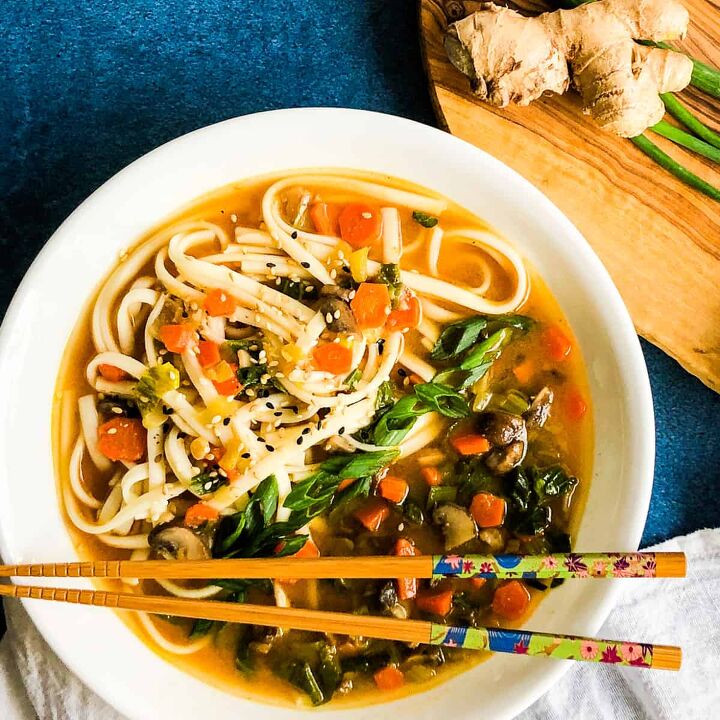












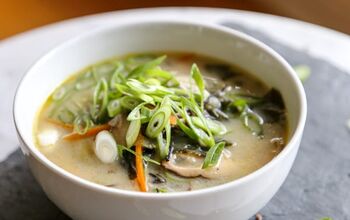



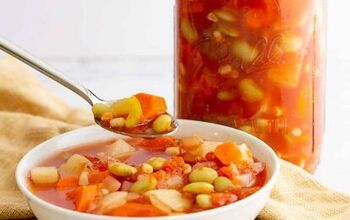




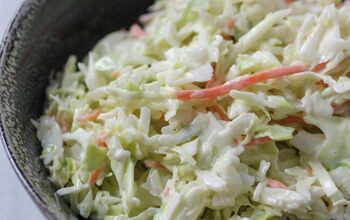
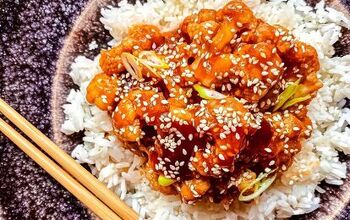




Comments
Share your thoughts, or ask a question!